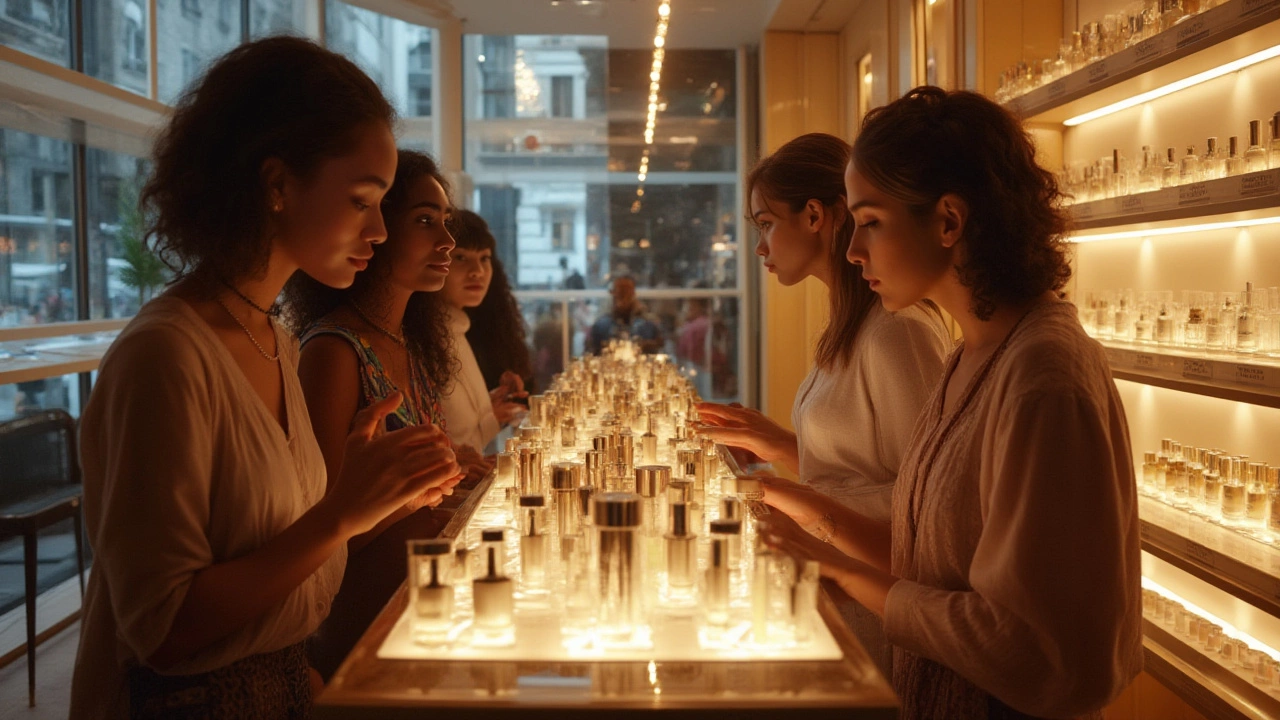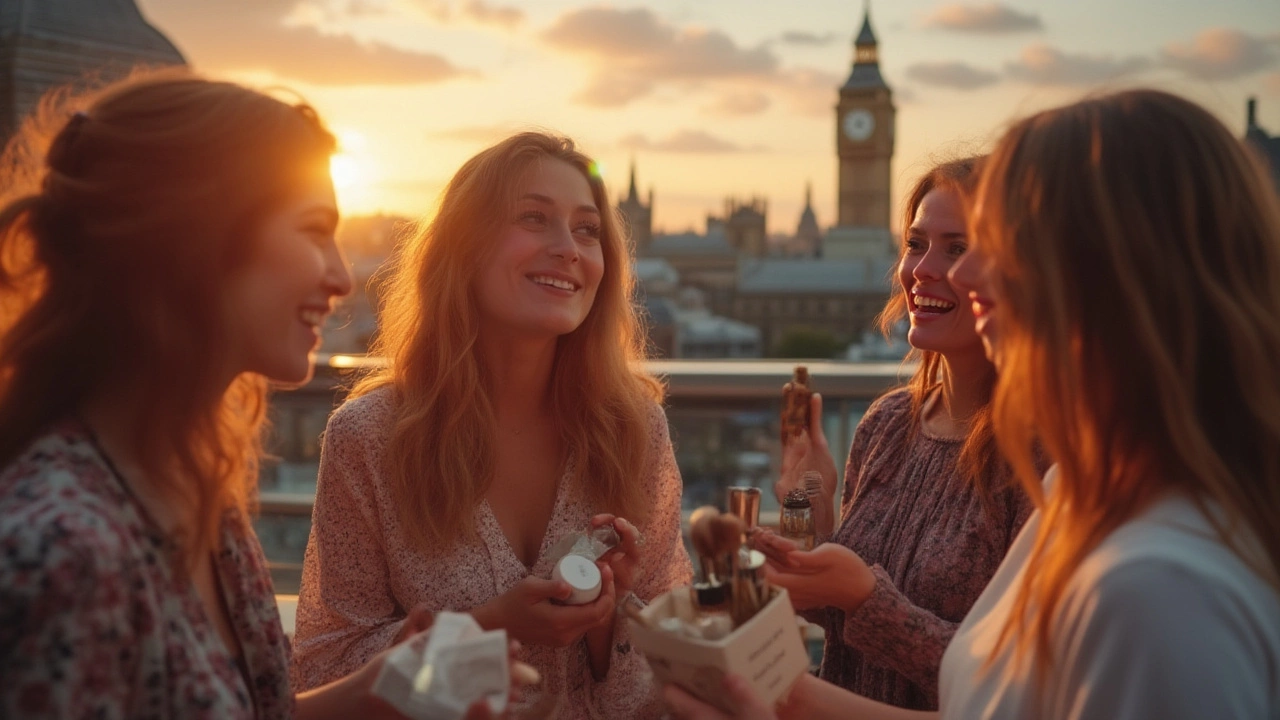
Everyone talks about the best anti-aging serum or miracle balm, but have you ever wondered which skincare brand actually sits at the top of the money pile? Behind your favorite glossy bottles and irresistible scents, there’s a fierce battle for dominance in the beauty world. The richest skincare brand isn’t just about fancy packaging—this title comes with multinational empires, addictive best-sellers, and a little drama too. In 2025, the winners and the way they got there might surprise you. Ready for some eyebrow-raising facts and practical tips? Let’s pull back the curtain.
The Skincare Industry’s Epic Money Machine
Skincare is a goldmine, make no mistake. Globally, the industry clocked in at over $180 billion in 2024, according to actual market analysts like Statista and MarketWatch. When you slap on a moisturizer, you’re joining an epic movement—one that’s growing even faster than makeup or fragrance. Luxury brands gobble up the biggest slices, driven by our endless cravings for glowing skin and promises in a tube.
The richest skincare brand, hands down, is Estée Lauder Companies. This isn’t only about their namesake line (which is massive) but also the galaxy of brands they own: La Mer, Clinique, Origins, Bobbi Brown, and even Tom Ford Beauty (for the glow-obsessed and cash-loaded upmarket crowd). For FY2024, Estée Lauder Companies reported a jaw-dropping $17.14 billion revenue. That’s about $47 million pouring in every single day—or, enough to buy a king’s ransom in gold leaf face masks each morning.
Here’s an eye-opening comparison of global skincare brand earnings in a table so you can see, in dollars, why Estée Lauder keeps its crown:
| Brand (Parent Company) | Annual Revenue (2024) | Notable Skincare Line |
|---|---|---|
| Estée Lauder Companies | $17.14B | Estée Lauder, La Mer, Clinique |
| L'Oréal Group | $13.1B (skincare segment) | L'Oréal Paris, Lancôme, Kiehl's |
| Shiseido | $7.9B | Shiseido, Clé de Peau Beauté |
| Beiersdorf (NIVEA) | $7.4B | NIVEA |
| Johnson & Johnson | $6.7B (skincare segment) | Neutrogena, Aveeno |
Fascinated yet? The real kicker is that Estée Lauder doesn’t just dominate luxury counters, it also powers through clinical, professional, and mass-market sales. With over 29 brands under its umbrella and presence in over 150 countries, it’s more than a household name—it’s an institution. What most shoppers don’t see: They’re loyal to the same parent group, even when jumping between brands.
What Makes a Skincare Brand Rich… and an Industry Icon
Money in beauty isn’t just about having a pretty logo or a celebrity face. It’s about building trust, creating addiction (in the good way—hello, holy grail night cream), and making sure the next big trend starts at their counter, not a competitor’s. Estée Lauder’s wild success rides on several things:
- Innovation that hooks people: La Mer’s "Miracle Broth" is legendary—not because of science, but because of storytelling and exclusivity. Buy the mystery, slather on hope.
- Skincare science that people trust: Advanced Night Repair from Estée Lauder is one of the best-selling serums in history, thanks in part to clever clinical claims and satisfied fans worldwide.
- Broad appeal: With brands targeting every budget, the company captures shoppers from drugstore first-timers to super-rich skincare collectors.
- Retail strategy on steroids: Sets in Sephora, counters in Asia’s fanciest malls, exclusive partnerships with airlines, and collaborations with pop stars—no channel left behind.
- Massive investment in research: Estée Lauder pours millions into R&D annually, working on everything from sensitive skin formulas to anti-blue light protection. It’s about being where the buzz is before the buzz even gets loud.
Here’s a quick fact: The most expensive face cream ever sold under the La Mer label cost nearly $2,500 for a limited-edition jar. And yes, it sold out.
If you’re hunting for what actually drives mega-profits in skincare, it comes down to loyalty and a craving for results. Repeat purchases of that serum or moisturizer are what build empires—and Estée Lauder’s repeater rate for its bestsellers reportedly tops 60%. That’s almost three times higher than the fashion industry’s repeat customer rate.

Best-Selling Products and What They Teach Us
Ever wondered what people spend the most on, year after year? Clock the shelves of department stores or open TikTok, and you’ll spot them: Advanced Night Repair, La Mer Crème de la Mer, and Clinique’s Dramatically Different Moisturizing Lotion. These bottles don’t just rake in cash—they define what the rest of the industry copies.
- Estée Lauder Advanced Night Repair: Launched in the 1980s and reformulated over the decades, this serum claims to reduce the appearance of wrinkles, dullness, and dry skin—almost like an insurance policy for your face. Fun fact: One bottle sells every 7 seconds worldwide.
- La Mer Crème de la Mer: Revered for its luxe textures and mysterious “miracle broth,” La Mer sells a jar every minute globally. Ultra-rich, ultra-pricey—but for many, apparently worth it. Stories of Jennifer Lopez and Beyoncé using it only fuel the cult status.
- Clinique’s Dramatically Different Moisturizing Lotion: This one’s for sensitive types and skincare newbies. A staple on vanity counters since the 1960s, it’s both affordable and lush, with more than 20 million bottles sold every year. Here’s a hack: Dermatologists still recommend this for acne-safe hydration, despite its humble price tag.
What do these bestsellers have in common? Simplicity, clinical vouching, and an emotional hook. The narrative behind each formula is often more powerful than the ingredient list itself. The lesson for curious buyers: Don’t scoff at marketing—sometimes, the story is why a cream works for you as much as the science does.
And here’s a fun hack—when you’re not ready to splurge, try seeking products with similar ingredients sold under other Estée Lauder brands. Sometimes the formula is tweaked, but the base technology remains similar across the brand family. Need Niacinamide or Hyaluronic Acid in your routine? Odds are, you’ll find it throughout the company’s lines.
What Sets Luxury Apart: Is Expensive Skincare Actually Better?
This is the battleground: Is dropping hundreds on a moisturizer buying you better skin—or just a shinier lid? You’d expect the richest skincare brands to invest in top-tier ingredients, but here’s the catch: Packaging and marketing eat up a big slice of the cost. A jar of luxury cream can cost $5 to produce and sell for $300 at retail.
Still, there’s a reason shoppers keep coming back. Luxury brands offer more than creams: spa-like experiences, retail therapy, and a what-if feeling. Gold dust, caviar extracts, marine algae, proprietary peptides—some sound gimmicky, but others spark trends that spill into drugstore brands a few years later. Estée Lauder Companies popularized the idea of nighttime skin recovery, layering serums, and mixable boosters for customized results. If you’ve got a five-step ritual before bed, you’re benefiting from their innovation (or their marketing genius—take your pick).
Don’t want to break the bank? Here’s a pro tip: Buy “travel-sized” or “gift with purchase” mini jars. You’ll get a taste of that luxury feel for far less, sometimes even free with a regular buy at counters during promotions.
Clinical studies often back some luxury claims, yet sometimes—especially in categories like moisturizer and SPF—basic formulas perform as well as the priciest newcomers. What’s different is the sensory experience: how the cream feels, smells, and absorbs. That plays a huge part in why big brands make so much money. Shoppers don’t just want results; they want ritual and romance.

Secrets to Success: Tips Inspired by the Richest Brand’s Playbook
You don’t need to be a billionaire to learn from the rich brands’ strategy. Here are some practical takeaways you can use to get better results from your skincare—no stock portfolio required:
- Don’t chase trends blindly: Even Estée Lauder sticks to a few, well-tested core ingredients—think hyaluronic acid, retinol, peptides, antioxidants. Build your routine on science, not just buzzwords.
- Stick to consistency: Rich brands count on loyal users. Instead of jumping from one miracle cure to the next, get the basics right for a few months. Let your skin adjust and see what really works.
- Shop smart: Grab bestsellers during sale events, duty-free shops, or holiday gift bundles. Rich brands know value packs inspire repeat purchases, so they’re more generous with extras at those times.
- Set realistic expectations: No one cream replaces sleep, diet, or sunscreen. The best routine combines a gentle cleanser, daytime SPF, and a hydrating night cream or serum.
- Watch for innovation spin-offs: The tech behind pricey creams often trickles down to sister brands in a year or two. That means you get advanced formulas without the hefty price tag.
One more sneak peek: If you see a new ingredient launch with big hype, wait for reviews and little-known clinical data. That’s exactly how Estée Lauder keeps trust: they quietly back each claim up with actual studies, not just influencer buzz.
When in doubt, patch test every new product—even the luxurious ones. Sensitive skin is trending up worldwide, and rich brands are responding with hypoallergenic launches, but your skin is unique. Take a page from industry insiders: test everything, keep a diary, and only add one new thing at a time.
So, next time you see that iconic glass bottle or velvet box, you know there’s a global empire—and decades of brilliance—behind it. Whether you splash out or go budget with the same parent brand, you’re playing a small part in what keeps the world’s richest skincare brand right at the top.